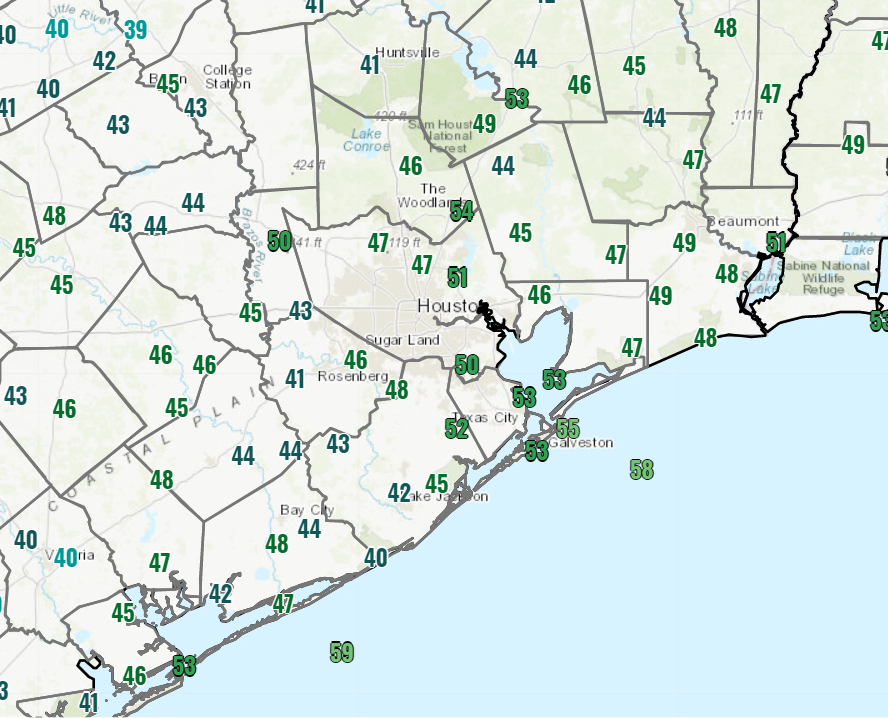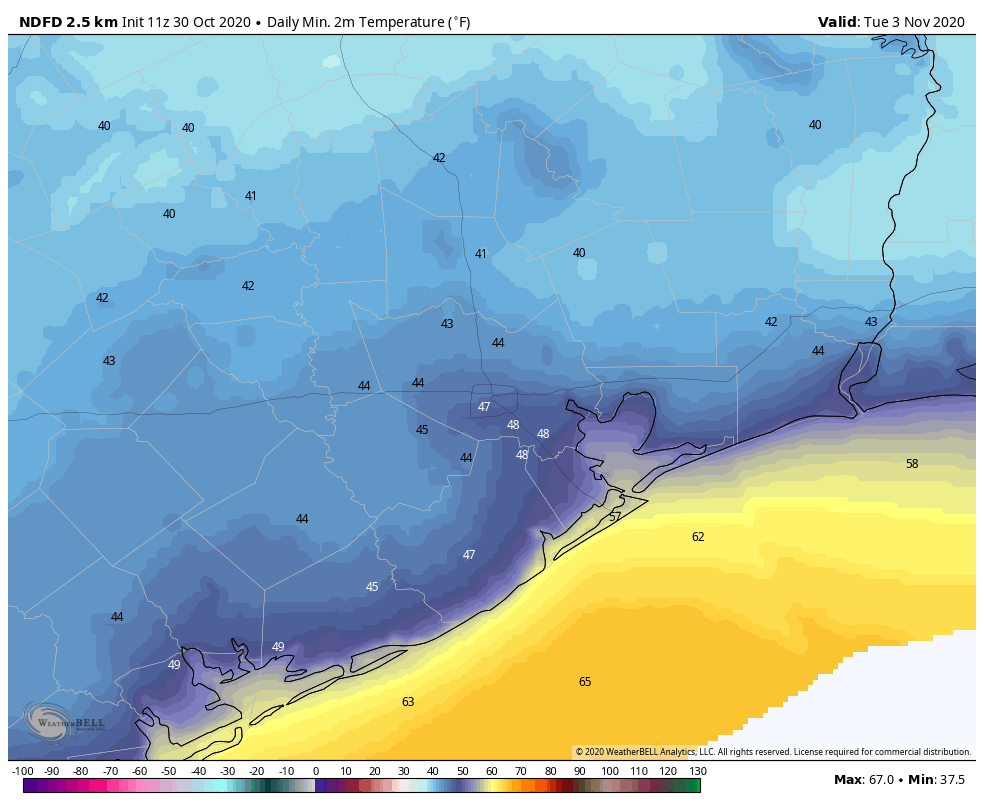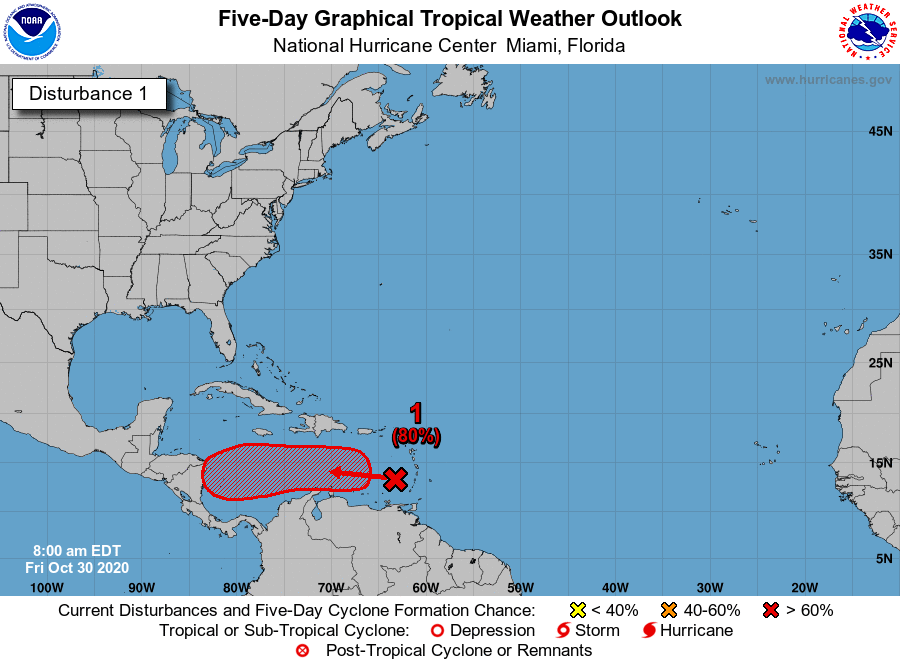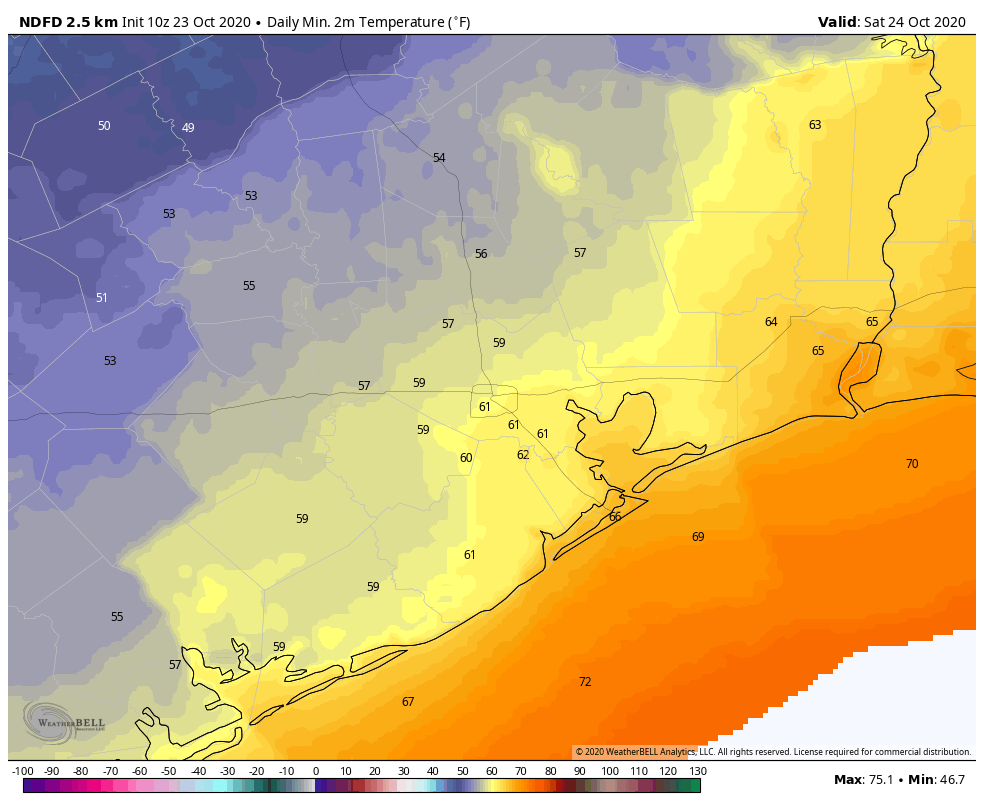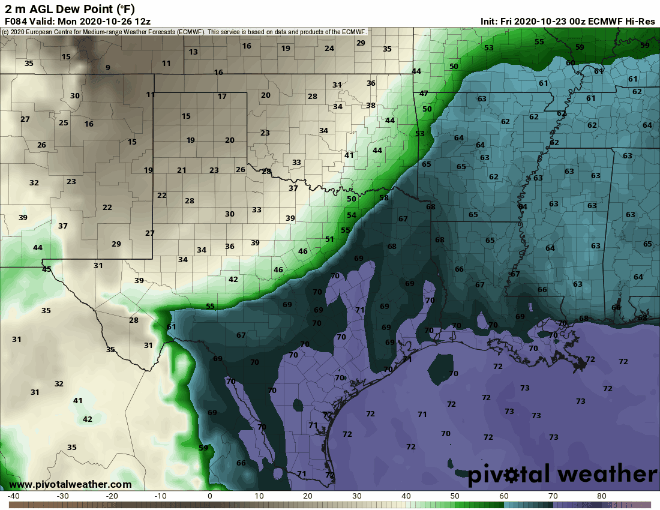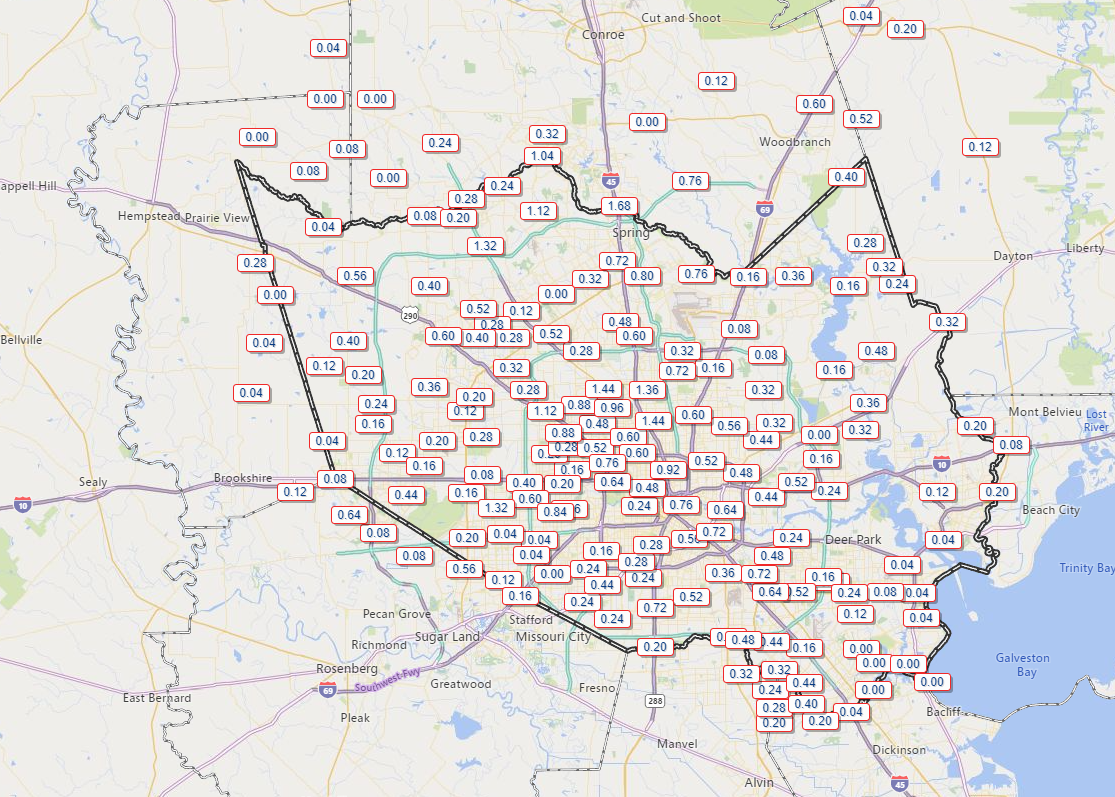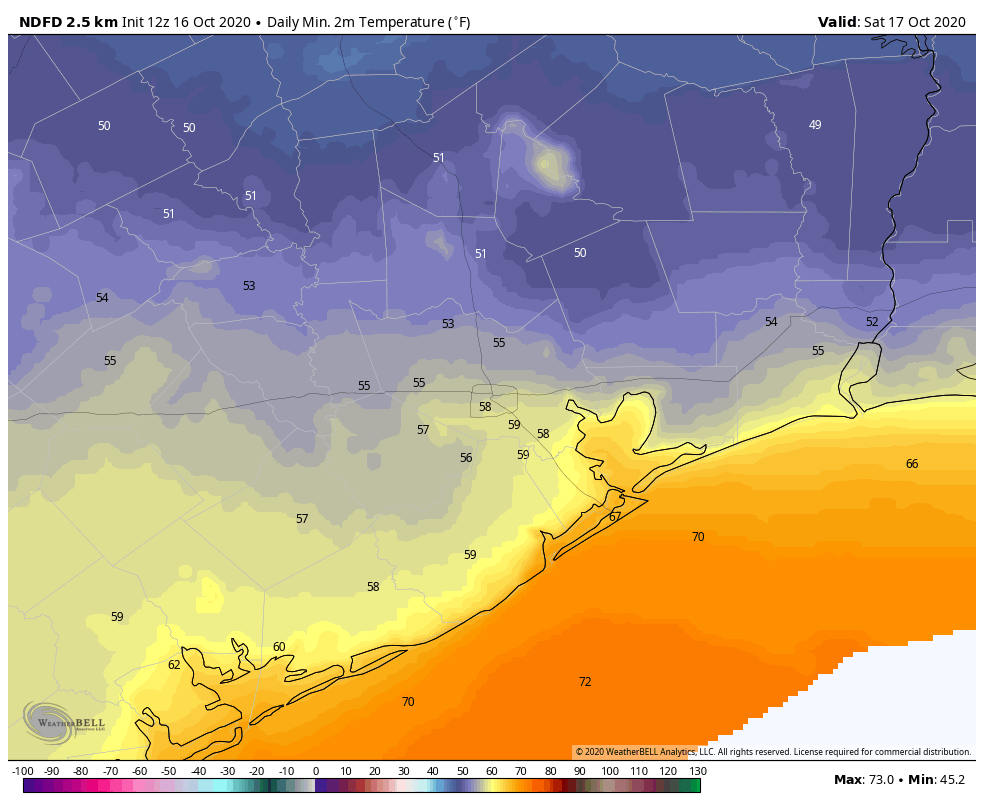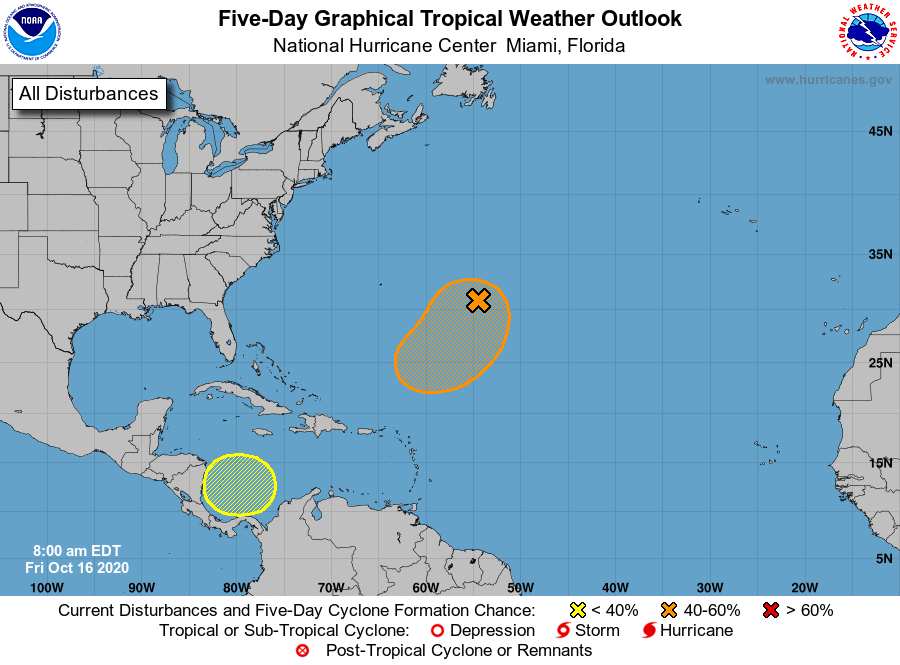After a truly delightful stretch of autumn weather the last week or so, the weather pattern will change this weekend, ushering in slightly warmer temperatures (especially in the mornings) and noticeably higher humidity. Overall, it should still be pretty nice though!
Today
Look for abundant sunshine today. We’ll manage to warm into the low-80s this afternoon after a cool start in the 50s for most.
Weekend
We should continue with partly to mostly sunny skies this weekend, although I think we’ll probably see at least a few more clouds on Sunday. Shower chances should be very low and mainly off to our east. They won’t be zero though, so don’t be shocked to see some sprinkles or a passing shower, especially east of I-45 on Sunday.
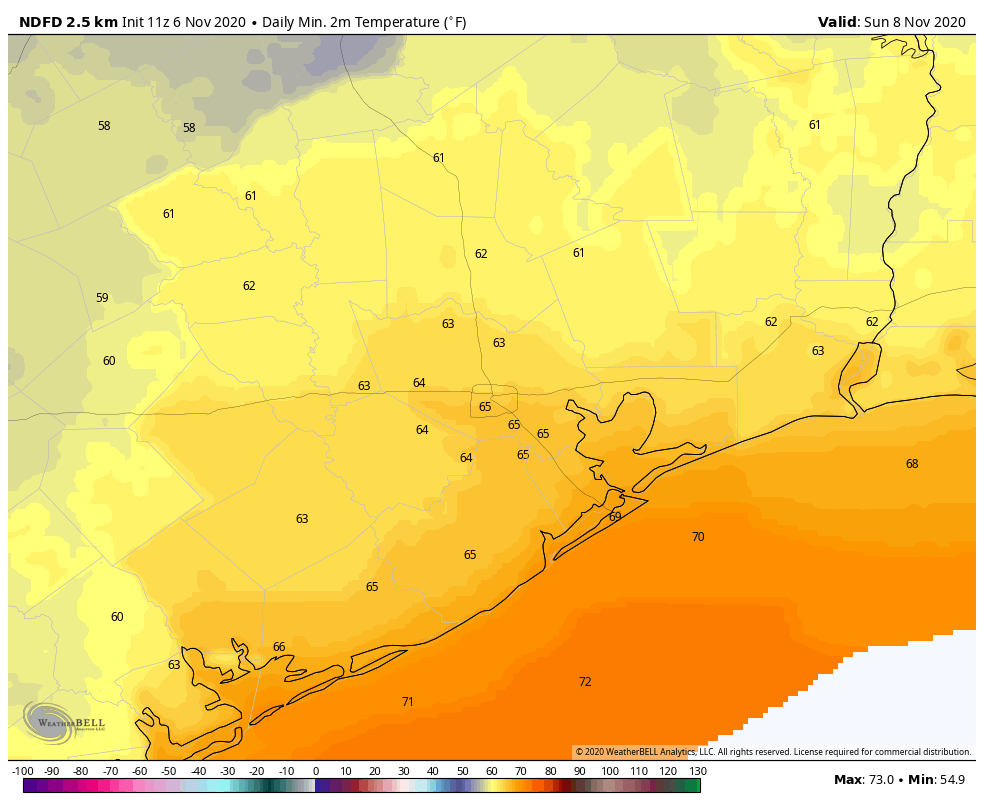
While daytime highs should be basically in the low-80s each day, morning lows will build from the upper-50s tomorrow, about 5 or 6 degrees warmer than today, to the mid-60s on Sunday morning.
Next week
We will continue to see temperatures and humidity build a bit on Monday. There should be a good amount of morning low clouds around, followed by some gradual clearing. That said, an isolated shower is possible. Highs should again be in the 80s after starting the day in the mid- to upper-60s. Tuesday sees a cold front approach the College Station area. We will again be warm with highs in the 80s and lows in the 60s, if not low-70s.
The question then becomes: Does that front get to Houston? Right now, the answer is probably not. At least not right away. Expect that front to flirt with us or areas to our west into later next week before perhaps getting a kick through by next weekend. We should see a mix of sun and clouds in the lead up to that. Temperatures will still be warm, but they might be a few degrees cooler than early in the week, however. More on this for you Monday.
We could use some rain
Since Tropical Storm Beta back in late September, the Houston area (officially) has had less than 1 inch of rainfall. Some places have seen some more, others less. While Harris County is not in drought, we are starting to see pockets of drought flare up in surrounding counties.
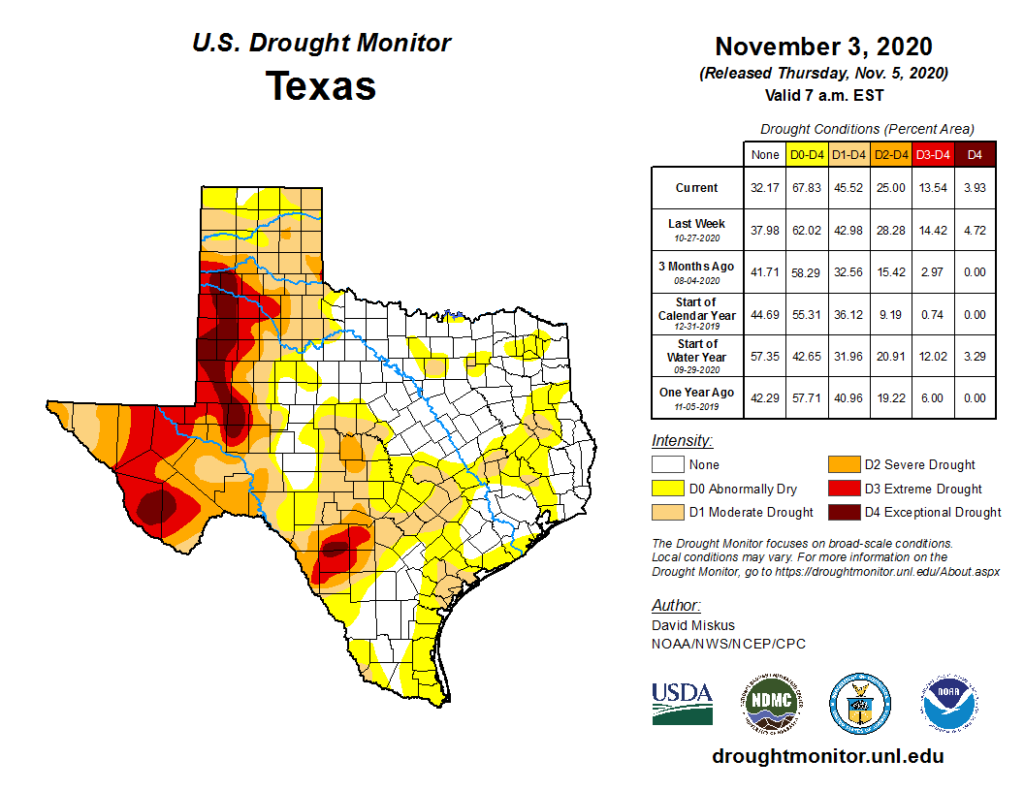
We could use a bit of rainfall. While the chance of showers isn’t zero over the next week, we aren’t expecting any meaningful rain. Perhaps with next weekend’s cold front push. We’ll see.
Tropics
Tropical Depression Eta is expected to return to tropical storm strength this afternoon or tonight. It will then take a very convoluted track over Cuba, possibly east of Florida, then back west into the Gulf.

We don’t expect Eta to intensify significantly, but nevertheless it will be a tropical storm, capable of doing tropical storm things for Cuba and South Florida. The end game here should see Eta picked up and lifted north into the eastern Gulf Coast later next week as our cold front slides that way, probably still as a tropical storm.

